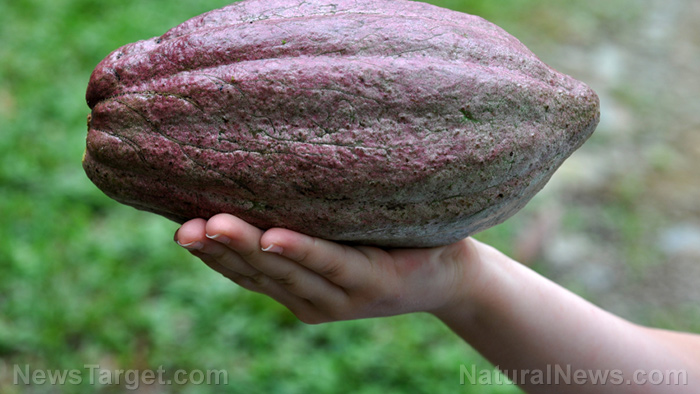 Parler
Parler Gab
Gab
- High blood pressure is a widespread, often asymptomatic condition that dramatically increases the risk of severe health complications.
- Simple, consistent lifestyle modifications, including dietary shifts, increased physical activity, and stress management, can effectively lower blood pressure.
- Specific exercises, even in short bursts, provide significant relief and improve vascular health.
- Chronic, unmanaged high blood pressure can indicate a more serious underlying issue, necessitating a consultation with a healthcare provider.
- Personal journeys from medication-dependence to natural, food-based protocols highlight the potential for transformative self-care.
The foundation of daily defense
The journey to lower blood pressure begins at the most fundamental level: diet. Professor Rasha Al-Lamee, a cardiology consultant at Imperial College London, identifies reducing salt intake as the single most impactful change. The modern diet, saturated with processed foods, breads, sauces, and ready meals, secretly loads the body with sodium. This excess sodium causes the body to retain water, increasing blood volume and pressing relentlessly against artery walls. The solution is a return to culinary simplicity—cooking whole foods at home where one controls the seasoning. This simple act of kitchen reclamation can yield results within weeks. To counterbalance sodium’s effects, embracing potassium-rich foods like bananas, avocados, spinach, and salmon helps the body maintain a healthier equilibrium, though moderation remains key to avoid other risks. Beyond salt, the overall composition of one’s diet plays a starring role. The much-lauded Mediterranean diet, with its vibrant emphasis on fresh fruits, vegetables, whole grains, and healthy fats like olive oil, provides a blueprint for cardiovascular wellness. Swapping butter for olive oil is not merely a culinary preference; it is a therapeutic maneuver that can lower systolic blood pressure significantly over time. This aligns with a deeper understanding of fats; where saturated fats from animal products and tropical oils can stiffen arteries and raise harmful LDL cholesterol, monounsaturated fats like those in olive and almond oil act as gentle custodians for the circulatory system. The story of a 48-year-old man from Illinois, who weaned himself off medication, illustrates this power. His daily protocol, fueled by flax seed, apple cider vinegar, cinnamon, tree nuts, and herbs like hawthorn berry, turmeric, spirulina, and catuaba bark, is a living testament to using food as medicine, creating a tapestry of nutrients that support rather than strain the heart.Movement as medicine and the specter of stress
Physical activity is another potent prescription, and it need not be daunting. The notion that one must commit to grueling, hour-long sessions is a myth that prevents many from starting. The reality is far more accessible. Professor Al-Lamee advises that even three 10-minute brisk walks dispersed throughout the day can lower blood pressure measurably. This "movement snacking" approach makes heart health achievable within the busiest of schedules. For those seeking greater challenges, strength training emerges as a particularly powerful ally. It does more than build muscle; it fortifies bone density and directly enhances vascular health, making arteries more flexible and responsive. The goal is to get the heart rate up for at least 20 minutes, three times a week, whether through swimming, cycling, or climbing stairs, creating a rhythm of exertion and recovery that trains the heart to work more efficiently. Yet, the body’s pressures are not only physical. The mind exerts a powerful influence on the heart’s workload. Stress hormones, part of our primal fight-or-flight response, cause a temporary spike in blood pressure. When stress becomes a constant, low-grade hum in the background, that temporary spike can evolve into a chronic condition. The practice of conscious deep breathing throughout the day is a free and always-available tool to calm the nervous system. Combining this with mindfulness, yoga, or time in nature, and prioritizing seven to eight hours of quality sleep each night, creates a holistic defense against the insidious pressures of modern life.A warning in the pulse: when to seek a professional guide
While lifestyle changes are powerful, they are not a substitute for professional medical diagnosis and care in all situations. Chronic high blood pressure that remains stubbornly elevated despite sincere efforts can be a red flag, signaling a more complex underlying health issue, like dissected arteries and worse - brain bleeds. Moreover, high blood pressure can be a symptom of kidney disease, thyroid problems, or sleep apnea, conditions that require specific medical treatments beyond lifestyle adjustment. This is why regular blood pressure checks are non-negotiable, especially during pregnancy, into old age, or after chiropractor adjustments (can damage arteries if poorly done). Many people, feeling perfectly fine, walk around with dangerously high readings. Home monitors provide an affordable window into this hidden world, with a target of below 135/85 mmHg for home readings. If blood pressure remains high, medication, or emergency procedures may be a necessary partner in protecting the heart, brain, and kidneys from long-term damage. The goal of lifestyle changes is not always to eliminate medication entirely but to create a healthier foundation where lower doses might be sufficient. As Professor Al-Lamee notes, she has seen patients who, after losing weight or changing their diet, require a lower dosage than before. This collaborative approach—where daily choices empower the individual and medication provides a safety net when needed—represents the most sophisticated strategy in the fight against hypertension. It is a partnership between personal responsibility and professional guidance, a recognition that while we can do much to heal ourselves, we must also know when to reach for a expert’s hand. Sources include: Dailymail.co.uk Newsroom.heart.org Enoch, Brighteon.ai NaturalNews.com Pubmed.govFlavanol-rich foods like COCOA can neutralize vascular damage caused by prolonged sitting
By Lance D Johnson // Share
New study confirms: CHEMOTHERAPY causes permanent HEART DAMAGE
By Lance D Johnson // Share
Patrick Holford introduces the quantum health revolution challenging modern medicine
By Kevin Hughes // Share
Herbs from India’s tribal pouch: Ginger
By News Editors // Share
Walking for 15 minutes straight beats short bursts for heart health, researchers say
By Cassie B. // Share
Governments continue to obscure COVID-19 vaccine data amid rising concerns over excess deaths
By patricklewis // Share
Tech giant Microsoft backs EXTINCTION with its support of carbon capture programs
By ramontomeydw // Share
Germany to resume arms exports to Israel despite repeated ceasefire violations
By isabelle // Share










